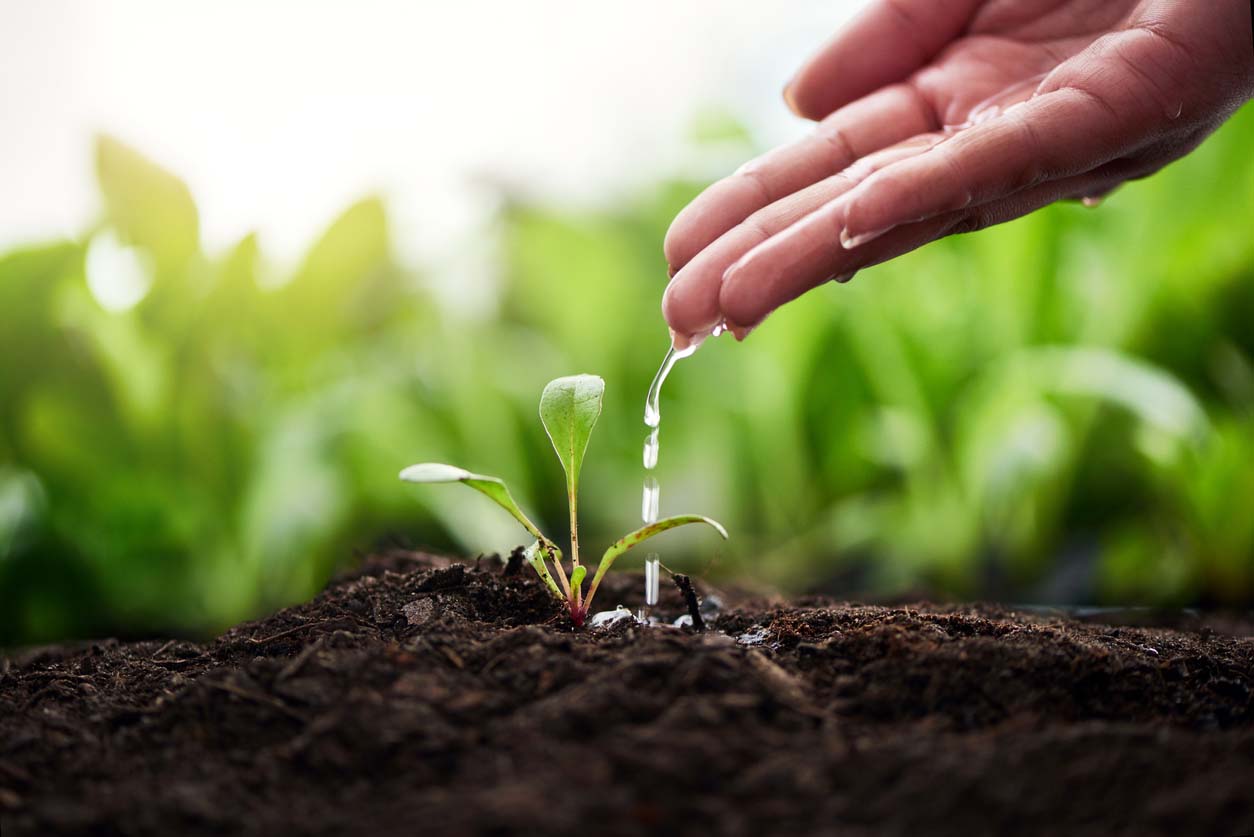Improving Herbicide Performance
Farmers (even gardeners) use herbicides to kill weeds. There are many factors that affect herbicide performance. Water quality; water pH; water, air, and soil temperature, type and volume of water; size of weeds; and even time of day can impact herbicide effectiveness.
Purdue University has several good publications on improving herbicide performance. PPP-86: The impact of water quality on pesticide performance. PPP-107 Adjuvants and the power of the spray droplets. PPP-112 Water temperature and herbicide performance. PPP-115 Compendium of herbicide adjuvants. This last publication explains how to prevent water minerals from tying up herbicides. Here are some tips from these publications:
Check your water quality. Water makes up at least 95-99% of the spray volume, so water minerals affect herbicide performance. Water quality is measured by water hardness. The more minerals there are, the higher the hardness. Hard water can reduce not only the herbicide solubility but also how well it is absorbed. Herbicides that are tied up in the spray tank are diluted, which can reduce their performance.
Common dissolved water minerals include calcium, magnesium, and iron. Water hardness measures the concentration of calcium and magnesium in water, the higher the concentration, the higher the number measured in parts per million (ppm). Soft water replaces calcium and magnesium with sodium and potassium ions. Soft water is 0–114ppm, Moderately Hard 114– 342ppm, Hard 342–800ppm, and Extremely Hard > 800 ppm. The ions that tie up herbicides are listed in the order of greatest potential to reduce herbicide activity: aluminum (A1+++) > iron (Fe+++, Fe++) > magnesium (Mg++) > calcium (Ca++). Water conditioners can be used to soften water and reduce ions that tie up herbicides. For best herbicide performance, follow the label and use soft water.
Use clean water for sprays. Tap water may appear to be clean, but small organic debris and even suspended solids (soil) in water tie up herbicides in the tank. Always use a filter before putting water in the spray tank. Avoid using water from ditches or ponds because it probably contains organic debris or may be higher in suspended solids.
Even water and air temperature can affect herbicide performance. Purdue University studies show that cold water (410F) and hot water (1000F) reduced herbicide effectiveness. The best performance occurred with warm water at 720F. Water that is too cold or too warm shocks the plant and reduces herbicide absorption. The best air temperature is when plants are actively growing so they can readily absorb the herbicide. Apply herbicides when it is too cold (below 450F) or even to warm (above 900F) may reduce herbicide performance. The best time to apply herbicides is between 10AM and 3PM when the sun is shining and plants are actively growing and absorbing nutrients. Also, most herbicides are absorbed best by small weeds (LT 4 inches tall).
Check your water pH and follow the label for adjusting pH to the desired level. Most herbicides, insecticides, and fungicides work best when the pH is slightly acidic, around pH 4– 6.5. A pH of 7 is considered neutral. Sulfonylurea herbicides perform better in slightly alkaline (above pH 7) conditions. When the pH falls outside the upper or lower pH boundaries, performance can be reduced. This may affect how long the herbicide can remain in a spray tank before it becomes ineffective.
The University of California at Davis has come up with the following guidelines based on water pH:
• A pH between 3.5 and 6 is satisfactory for most spraying and short-term (12–24 hours) storage of most mixtures in a spray tank. Not suitable for sulfonylurea urea herbicides.
• A pH between 6 and 7 is adequate for immediate spraying for most pesticides. Do not leave the spray mixture in the tank for more than 1–2 hours, to prevent loss of effectiveness.
• Most products mixed in alkaline water (GT pH 7) should be sprayed immediately. Most herbicides can be tied up in minutes.
Herbicide adjuvants improve herbicide performance. For example, ammonium sulfate is often used to improve water conditioning to reduce water hardness. However, ammonium sulfate can not be used with dicamba soybean herbicide. It states that clearly on the label, so always read and follow label directions because that is the law.
There are at least 13 classes of herbicide adjuvants. Some are water conditioning agents that improve water hardness and water quality. Others are surfactants that reduce surface tension and allow the herbicides to be absorbed better. Other adjuvants include oil concentrates, evaporation retardants known as humectants, ammonium fertilizer solutions, defoamers, anti-foamers, marking agents, stickers, pH adjusters, and drift suppressing agents, etc. Following these tips can improve herbicide performance and reduce re-spraying.
